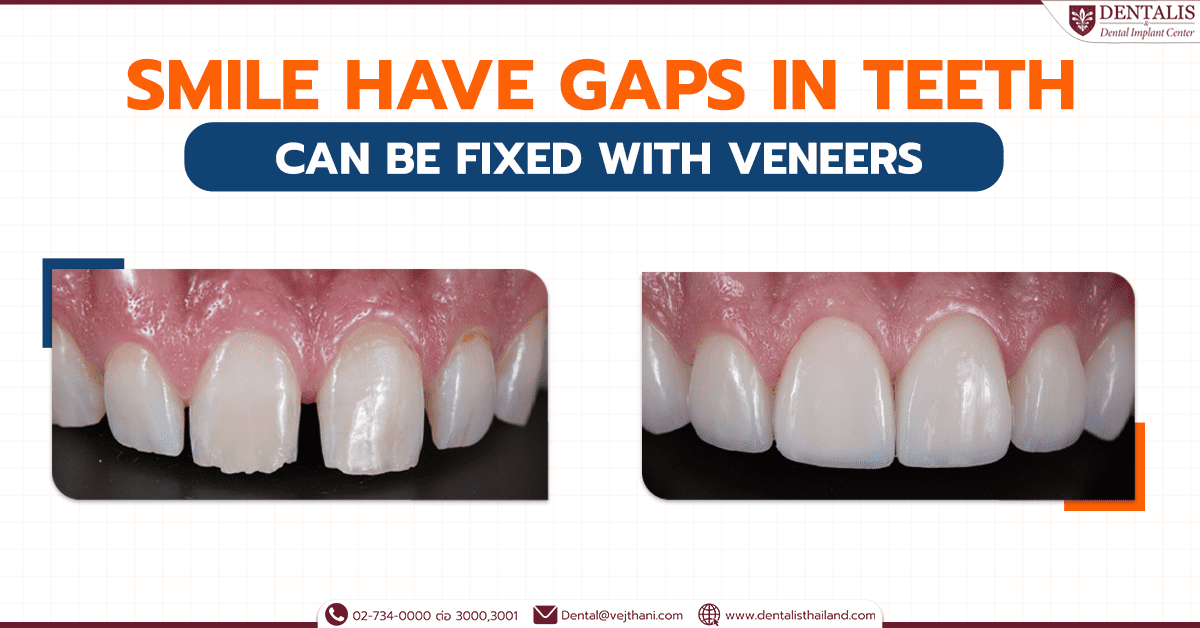
Teeth enamel discoloration can be caused by staining, aging, or chemical damage to teeth. Some of the more common causes of teeth discoloration are medications, coffee, tea or cigarettes. People who drink significant amounts of cola soft drinks can experience similar staining.
Aside from staining, there are other factors that can affect the color of an individual’s teeth. Genetics can play a role. Some people have naturally brighter enamel than others. Disease can also be a factor and certain medications can cause a discoloration of the teeth. If you suspect that there is an underlying medical cause for your teeth discoloration, be sure to inform your cosmetic dentist.
Teeth Whitening : Overview
Tooth whitening is used to correct discoloration of the teeth by removing the brown and yellow staining. The term “teeth whitening” can refer to a number of techniques to improve the brightness of the patient’s teeth. Among them are chemical whitening, mild acid whitening, abrasive teeth brightening and
the newest technique, laser teeth whitening.
Teeth Bleaching :
Tooth bleaching is chemical process used to lighten dentists the color of the patient’s teeth. The procedure can be performed entirely in the cosmetic dentist’s office or it can be performed by the patient in their home, using the materials provided by the dentist. The home method is often used because it saves the patient from having office visit for each treatment.
Before the patient embarks on the home teeth whitening regimen, the osmatic dentist creates a custom mouth tray for the patient. It ensures that the correct amount of whitening solution is used and that the patient’s teeth are properly exposed to the whitening solution. The custom made mouth tray provides a better fit than a one-size-fits-all mouth tray to help increase the margin of patient safety.
The steps in the home teeth whitening regimen are fairly straightforward. The cosmetic dentist provides the patient with the materials and instructions and also answers questions the patient may have about the routine. Your dentist’s office can also provide you with off-site supervision should you have any questions once you’ve begun.
A home whitening session can last for two to three hours, during which time you will have the tray and solution in your mouth. Depending upon your needs and desired results, your dentist may instruct you to keep the tray in your mouth overnight. Typically, you will follow your home teeth whitening regimen for two to three weeks, after which time you will return to your cosmetic dentist for a follow up visit.
How long does teeth whitening last?
Tooth whitening is not a permanent procedure. Results can last for one or more years, depending upon your personal habits. In most cases, the whitening procedure is very effective and the patient is pleased with the results.
Types of Tooth Whitening Procedures :
There are a few tooth whitening procedures available that correct discoloration of the tooth by removing the brown and yellow staining. While each work effectively, there are advantages and disadvantages to each procedure dependent upon your objectives and commitment to the processes. The type of procedures available should be discussed with your cosmetic dentist, and they will recommend the most appropriate tooth whitening procedure for you.
Laser Bleaching :
Using a laser with a whitening gel, this is an in-office bleaching system. The translucent bleaching gel is applied to the tooth and a laser light is used to activate the crystals to absorb the energy from the light and penetrate the tooth enamel to increase the lightening effect on the tooth. The length of time in the cosmetic dentist’s chair depends on the degree of discoloration you have.
Tooth Bleaching :
A small amount of the bleaching abrasive is applied to the tooth. This is the most common technique because it costs less, but is most effective for mildly stained teeth. This procedure is sometimes used in conjunction with the in-office laser bleaching if you have severe discoloration(dark gray or purple) or internal tooth staining.
Tooth Veneers:
Often an alternative to crowns, veneers are very thin pieces of specially-shaped porcelain or plastic that are glued over the front of your teeth with little or no anesthesia needed. They are the cure for teeth that are severely discolored, chipped, have small holes or pits, misshapen or crooked, or for the correction of unwanted or uneven spaces. Unlike crowns, veneers won’t require the dentist to remove much of the tooth itself. Veneers are created from an impression taken in your cosmetic dentist’s office.
Your custom veneer is then glued directly onto your tooth. Typically costing less than crowns, veneers won’t stain, making veneers a very popular solution for many people seeking that perfect smile. Strong and very durable, veneers last from ten to fifteen years, and come in colors that will brighten dark teeth without the worry of them changing color.
Advantages & Disadvantages of Tooth Veneers
Pros and Cons of Traditional Porcelain Tooth Veneers
Advantages:
- Perfect smile. Strong and very durable, veneers last from ten to fifteen years, and come in colors that will brighten dark teeth without the worry of them changing color. Veneers are typically done in only two one and a half hour long appointments, and can actually strengthen your tooth. There is no additional maintenance, other than a follow-up visit to your cosmetic dentist and proper brushing and flossing on a daily basis. Finally, a whiter smile gives people to whom you are speaking a place to focus on and gives you a friendlier appearance.
Disadvantages:
- It takes roughly a week or two of a period of adjustment to get used to your teeth that have been changed in color, size, spacing and shape. While very little tooth is removed in most cases, there are situations where more tooth must be removed which increases the risk of trauma to the tooth. The amount of tooth to be removed for the veneers should be discussed with your cosmetic dentist beforehand.
- It is common to have minor sensitivity after your teeth have been prepared for your veneers while wearing the temporary veneers. Some people can experience a difference in speech, usually pronouncing “s” and “f” sounds. This is corrected through minor adjustments your cosmetic dentist can make to your veneers. Veneers are very reasonable facsimiles of natural teeth, but not perfect replacements for natural teeth. It’s common to see slight variations in the color of veneers upon very close inspection, as with natural teeth. It can take up to a month or two before your new smile feels a part of you.
- If you suffer from bruxism, clenching or grinding of your teeth, veneers can be damaged, chipped or cracked from this. If you suffer from bruxism, speak with your cosmetic dentist about wearing a mouth guard at night to protect your new smile.
Fillings for Dental Cavities
At some point in ours lives, most of us wind up with a cavity. In most cases, a cavity calls for your dentist to remove the decay and to fill in the tooth area that was removed. There have been a number of advances in the field over the past few years, so if you’re one of the lucky ones and haven’t had a cavity in a while, you should read up on what is available today so that you understand the choices available for you.
Types of Dental Fillings
Composite Resin Fillings:
- There are no known health risks of receiving composite fillings. Composite resin dental fillings were created as an alternative to traditional metal dental fillings. Composite Resin Dental Fillings are strong, durable, and made for a very natural looking smile. Many dental insurance plans cover their use.
Amalgam Fillings:
- Amalgam fillings may contain mercury, and are often referred to as metal fillings. Their safety has been in question for a number of years due to concerns over the absorption of elemental mercury contributing to several diseases, including Alzheimer’s, multiple sclerosis, dementia and arthritis. The FDA investigations have not proven that the minute amount of mercury vapors released from silver fillings is a health hazard. Amalgam fillings are a mixture of mercury liquid and small pieces of silver and other metals such as copper, tin and zinc.
Inlays and Onlays:
If over half of your molar tooth’s biting surface is decayed an inlay or onlay may be a better option than a filling. These options are basically suitable for when more than a filling is needed but less than a crown will do. An inlay is placed in between the cusps of the tooth, whereas an only will cover one or more of the cusps. They can be made of a gold alloy, porcelain or tooth-colored resin and are cemented into place.
What are Composite Resin Fillings?
Most of us have had amalgam fillings (silver) or gold filling restorations. Some amalgam fillings were what we have called mercury fillings, as some amalgam fillings contained mercury. Metal fillings were effective, but very conspicuous and tended to blacken in color over time.
Composite resin dental fillings were created as an alternative to traditional metal dental fillings. Tooth fillings are colored to look like a natural tooth are known as Composite Resin Dental Fillings and are made of a plastic dental resin. Composite Resin Dental Fillings are strong, durable, and make for a very natural looking smile. Many dental insurance plans cover their use.
Who is a Candidate for Tooth-Colored Composite Resin Fillings?
If you have a cavity in a tooth, broken fillings, mercury fillings, or amalgam fillings, this type of dental filling is well worth discussing with your dentist. Mercury fillings or amalgam fillings can easily be removed and replaced with far more attractive colored fillings. These fillings actually strengthen your tooth beyond the level it had with the amalgam fillings.
Composite resins may also be used to enhance the appearance of any tooth, which is a tooth bonding procedure. The composite resin will strengthen and enhance the natural tooth structure as it does with use as a dental filling. (You can read more about a related procedure, tooth bonding, here.)
Composite resin dental fillings were created as an alternative to traditional metal dental fillings. Tooth fillings are colored to look like a natural tooth are known as Composite Resin Dental Fillings and are made of a plastic dental resin. Composite Resin Dental Fillings are strong, durable, and make for a very natural looking smile. Many dental insurance plans cover their use.
How are composite resin fillings accomplished?
Your dentist will give you a local anesthetic to numb the area. The dentist then prepares an
access to the decayed area of the tooth and removes the decayed portions. This is accomplished with traditional drills, micro air abrasion or even with a dental laser. With a composite filling, your dentist will preserve more of the natural tooth as the composite resin can be bonded to the tooth in thin layers. If your tooth’s decayed area is close to a nerve, a special liner will be used to protect the nerve.
A special dental material is then used to open up the pores of your tooth’s dentin and roughens up the surface of the exposed enamel. This achieves better and stronger bond. The bond resin is applied to stick the composite to your tooth. This material is made of the same dental resin as the composite however it is much more fluid. This layer is then hardened and cured with a very bright light. Composite resin fillings are applied in thin layers, and slowly built up to form the complete filling. A bright dental light will harden each layer before the next is applied.
Once your filling is completed, your dentist will use a special paper, articulating paper, to adjust the height of your dental filling and that your bite remains correct. Your tooth is then polished. If such a filling is not going to be enough to protect your damaged tooth, or if your tooth enamel is thin and will easily fracture, or if your tooth has had a root canal that weakened your tooth condition, your tooth may require additional protection such as a crown.
Gingivectomy Surgery / Bone surgery for cosmetic purposes
Many people have aesthetic problems associated with gingiva and teeth. Gummy smile, short teeth, thick gingiva and uneven gingival margin level. Gingivectomy surgery is a procedure within the field of esthetic dentistry that can address and improve these issues. Achieving a beautiful smile may necessitate gingival surgery in combination with other procedures, such as veneers, crowns, and orthodontics.
Gingivectomy Surgery for esthetic purposes, it is essential to consult with a dentist to assess the causes and various factors, including the shape of the teeth, the thickness and level of the gums and the bone surrounding the teeth, gum inflammation, lip mobility, the width of the smile, and the characteristics of the jawbone.
Reasons for gingivectomy Surgery
Cosmetic gum surgery can correct issues related to an unattractive smile, such as excessive gum visibility, thick gums, uneven gumlines, short or unattractive teeth, and bony protrusions that hinder a beautiful smile. Additionally, in certain problem areas where gum inflammation is caused by thick gums, deep gum pockets, or dental cavities under the gum margin, gum surgery, along with bone reshaping, can be used to correct and prevent these issues.
There are several surgical procedure to enhance aesthetics of gum, and the choice is typically based on individual patient needs. There are two main types:
1. Gingivectomy: This procedure involves selectively removing gum tissue, making the teeth appear longer and reducing gum thickness. This method of gingiva trimming is used in cases where the patient already has the proper shape and level of bone surrounding the teeth, and it doesn’t require the gums to be opened to access the bone.
Gingivectomy can be done in several ways. Whether using a surgical blade or using laser surgery. Laser cutting has the advantage of being easy to do. There is less bleeding at the surgical site than with blade cutting.
2. Gum Surgery with Bone Reshaping: In cases where the bone structure around the teeth is unsuitable, such as when there are bony protrusions or uneven bone levels, a combination of gum surgery and bone reshaping is performed to enhance the appearance. This approach involves reshaping both the bone and the gum, making it more suitable for creating an aesthetically pleasing gumline.
Advantages of gingivectomy / bone trimming surgery
Advantages of cosmetic gum surgery and bone reshaping include achieving a beautiful and confident smile, increasing tooth length to create better proportions, and addressing gum inflammation issues. The surgical procedure typically lasts 1-2 hours, and
Steps of gingival surgery
Step 1: Before proceeding with the surgery, patients undergo an oral examination and dental imaging to evaluate the condition of their teeth and jawbone. In cases where gum inflammation or periodontal disease is present, patients may receive dental scaling or root planing to reduce gum inflammation and ensure healthy gums before the surgical procedure.
How to care after gum surgery
Step 2: The dentist will assess the causes and issues that the patient needs to address. They will explain the treatment methods, including any limitations, and provide a treatment plan. This helps the patient understand the proposed procedure, its benefits, and what to expect during and after treatment.
Step 3: During the surgical procedure, it begins with the administration of anesthesia. The level and curvature of the gumline to be trimmed are determined. Subsequently, the gum tissue is cut using a laser or a scalpel. In cases where bone reshaping is also performed, an incision is made in the gum to access the bone for reshaping. Once the desired bone and gum levels are achieved, the incision is sutured closed. Typically, the surgical procedure takes about 1-2 hours, depending on its complexity.
Step 4: Afterward, patients will be scheduled for follow-up appointments to clean the surgical site and remove sutures approximately 10-14 days after the surgery.
After the surgery, it’s essential to follow post-operative care instructions, avoid chewing in the surgical area, steer clear of hard and chewy foods, and maintain proper oral hygiene. Medications may be prescribed to manage pain and inflammation, and any persistent bleeding should prompt immediate follow-up with a dentist.
In summary, esthetic problems like excessive gum exposure, short teeth, or bony protrusions can be effectively corrected through gum surgery. Various methods are available to tailor the procedure to the patient’s unique needs, ultimately leading to an improved and more complete smile.




02-734-0000
Dentalis